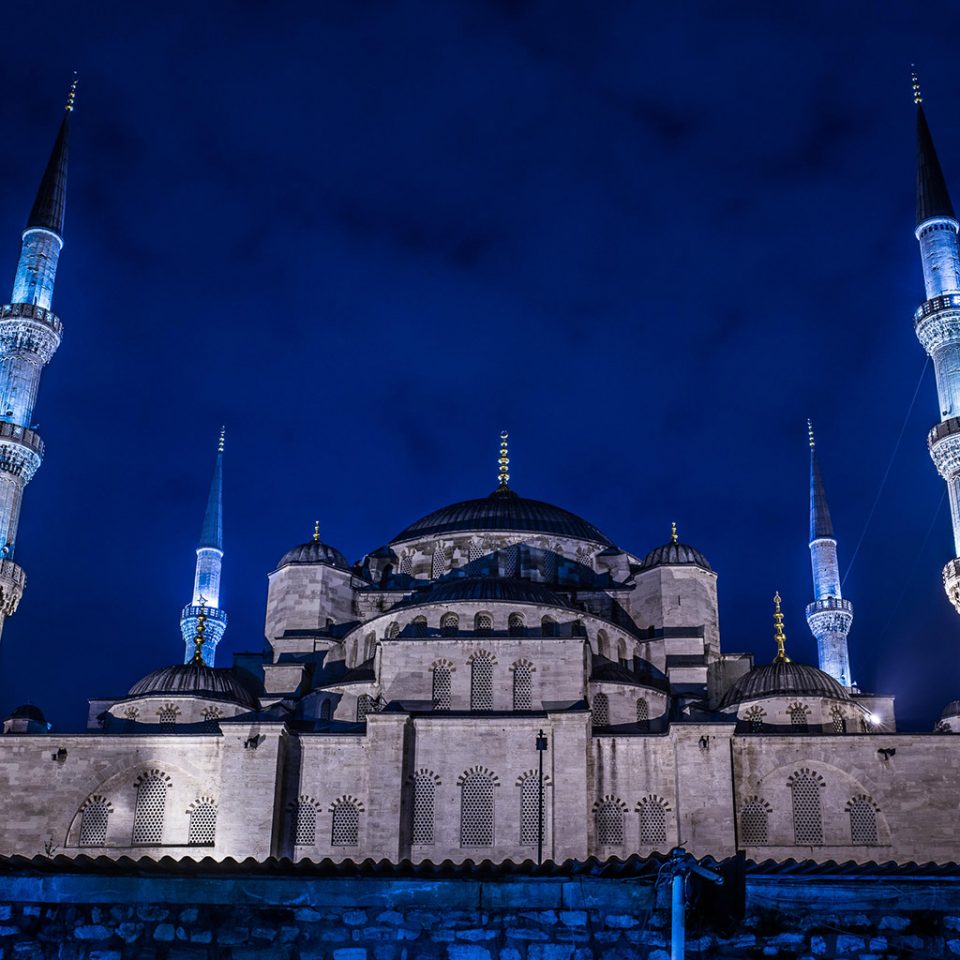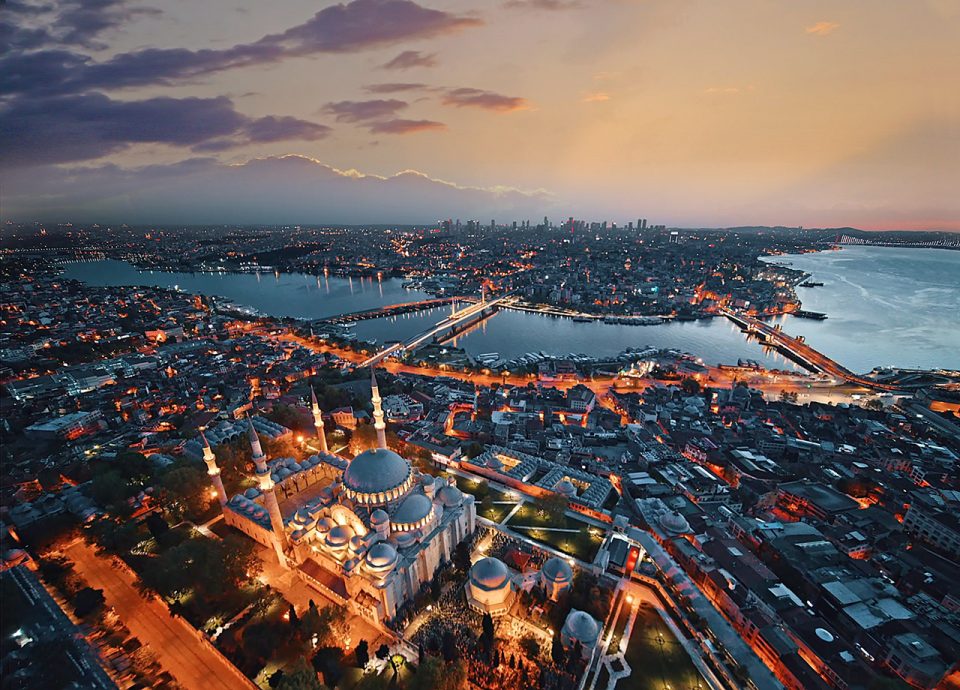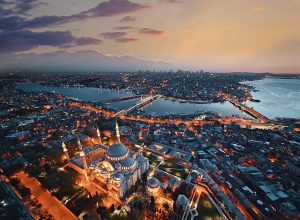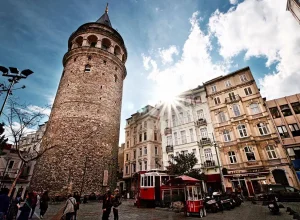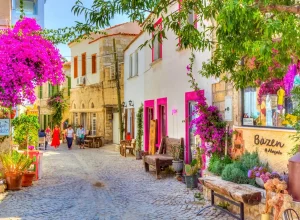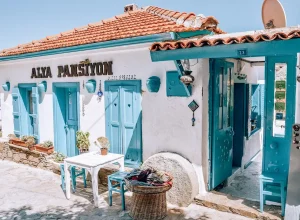Sultan Ahmed Mosque, also known as the Blue Mosque, is one of the most famous landmarks in Istanbul, Turkey. Completed in 1616 during the reign of Sultan Ahmed I, this mosque is a masterpiece of Ottoman architecture and a symbol of the city’s rich cultural heritage. With its six towering minarets, vast domes, and intricate tilework, the mosque is a testament to the vision and skill of the artisans and architects who designed and built it. In this blog post, we will delve into the history, architecture, and significance of the Blue Mosque.
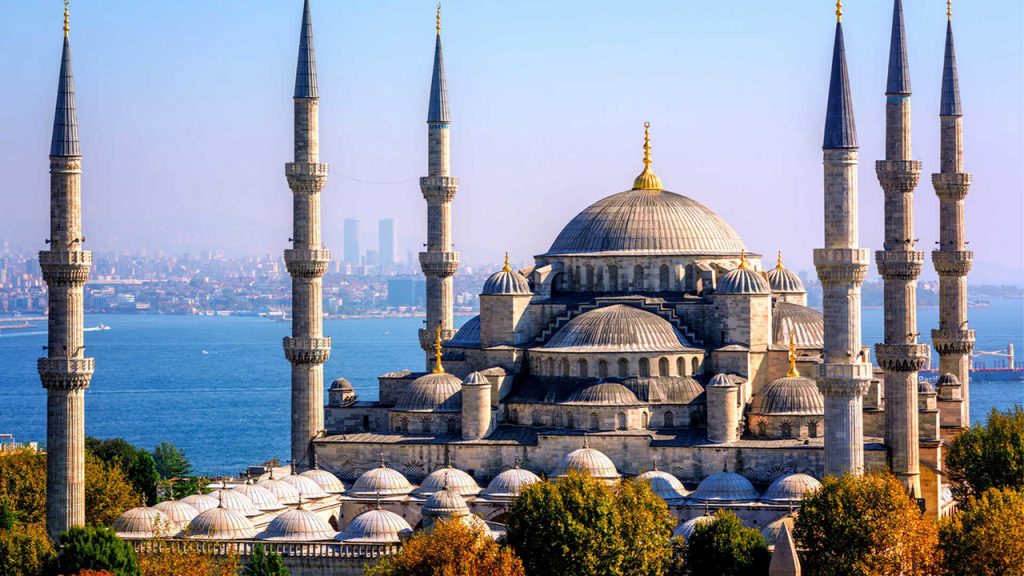
Table of Content
History of the Sultan Ahmed Mosque:
The Blue Mosque, also known as the Sultan Ahmed Mosque, is one of the most famous and beloved landmarks of Istanbul, Turkey. Its history is intricately woven into the fabric of the city and the Ottoman Empire.
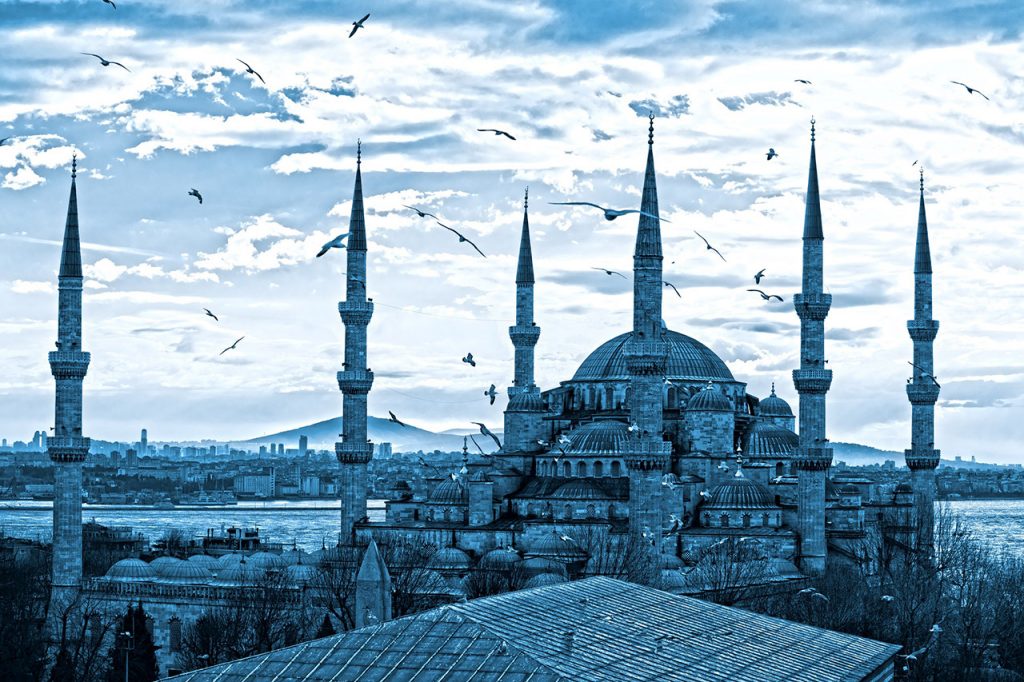
The mosque was commissioned by Sultan Ahmed I, who ascended to the throne in 1603. He was just 14 years old at the time, and his reign was marked by a period of relative stability and prosperity. He was a deeply religious man and wanted to build a mosque that would reflect his devotion to Islam and his vision for the Ottoman Empire.
The construction of the mosque began in 1609 and took seven years to complete. It was designed by a young architect named Sedefkar Mehmed Agha, who was a student of the famous Ottoman architect Sinan. Agha was only 27 years old at the time and had never designed a building of this scale before, but he rose to the challenge and created a masterpiece that would become one of the most iconic landmarks in the world.
The mosque was built on the site of the ancient Byzantine palace known as the Great Palace of Constantinople. It was strategically located at the center of the city, on a hill overlooking the Bosphorus Strait and the Golden Horn. The location was chosen to emphasize the power and grandeur of the Ottoman Empire and to create a new focal point for the city that would rival the nearby Hagia Sophia.
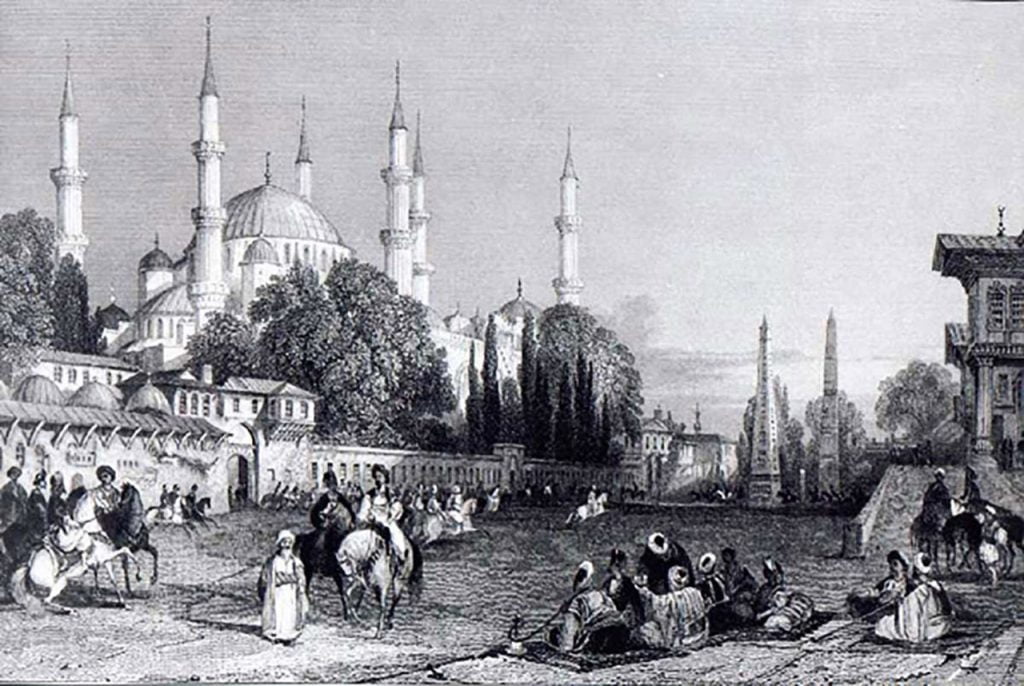
The mosque is known as the Blue Mosque because of the thousands of blue tiles that cover the interior walls. The tiles were imported from the city of Iznik, which was famous for its ceramics. The blue tiles create a serene and peaceful atmosphere inside the mosque, and they are complemented by intricate calligraphy and geometric patterns.
The mosque was an instant success and became a symbol of Ottoman power and prosperity. Sultan Ahmed I himself led the first prayers inside the mosque in 1617, and it quickly became a popular destination for pilgrims and tourists alike. Today, it is one of the most popular tourist attractions in Istanbul and is visited by millions of people every year.
Over the years, the mosque has undergone several renovations and restorations. The most recent restoration was completed in 2020 and was overseen by the Turkish government. The restoration was necessary to repair damage caused by earthquakes and to improve the safety and accessibility of the mosque for visitors.
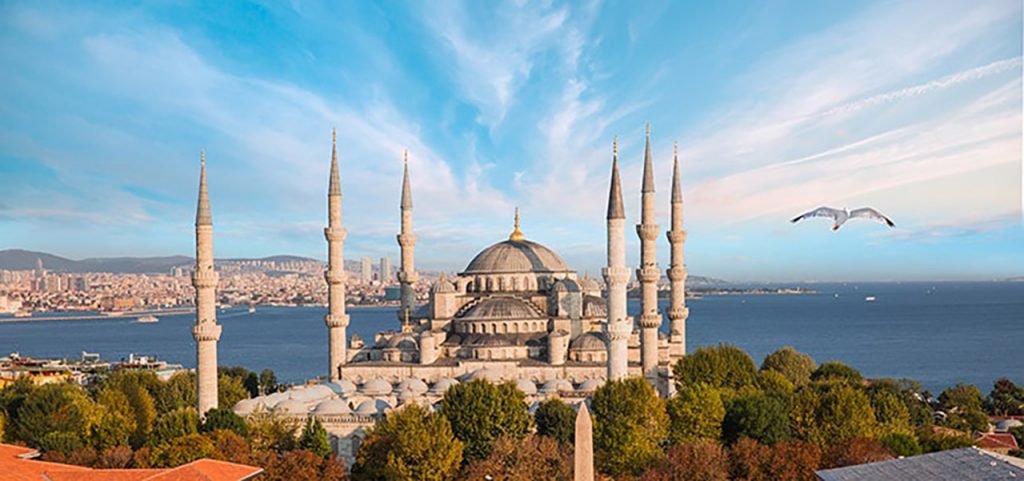
In conclusion, the Blue Mosque is a testament to the ingenuity and creativity of the Ottoman Empire. It has stood the test of time and remains one of the most iconic landmarks in the world. Its history and beauty continue to inspire and awe visitors from all over the world, and it will undoubtedly remain a beloved symbol of Istanbul for generations to come.
The architecture of the Blue Mosque
The Blue Mosque is a stunning example of Ottoman architecture, characterized by its vast domes, cascading domes, and intricate tilework. The mosque’s six minarets are a unique feature; most mosques have either two or four minarets. According to legend, the sultan instructed his architect to build seven minarets, but the architect misunderstood and built six instead.
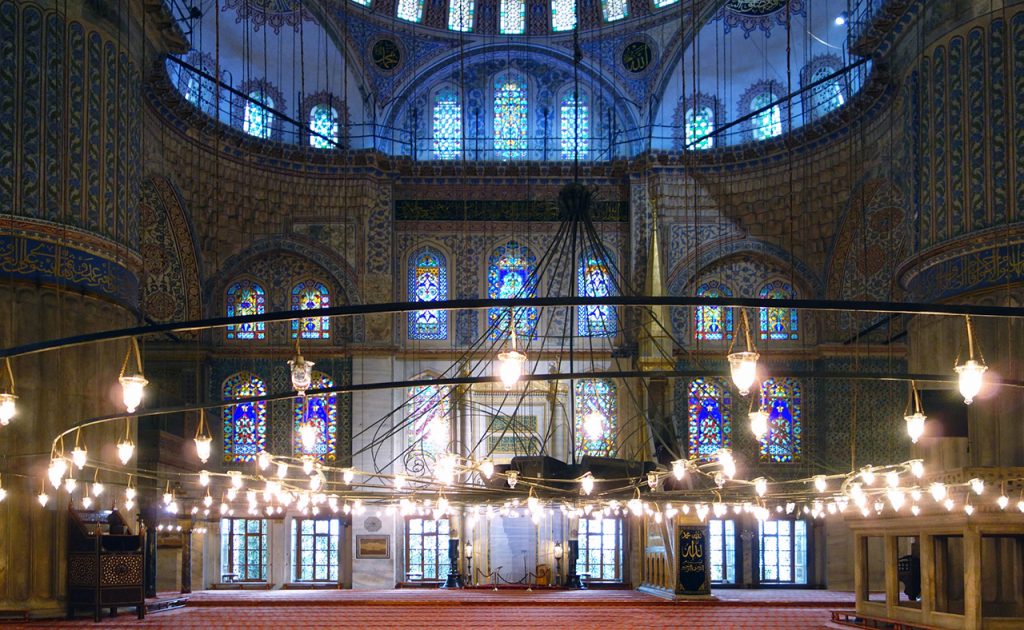
The architecture of the Blue Mosque is truly remarkable and represents the pinnacle of Ottoman mosque design. The mosque was designed by architect Sedefkar Mehmed Agha, who was a student of the famous architect Sinan.
One of the most striking features of the mosque is its impressive domes. The central dome, which is 23.5 meters in diameter and 43 meters high, dominates the interior space of the mosque. It is flanked by smaller domes, which create a sense of harmony and balance. The exterior of the mosque is equally impressive, with six minarets rising high into the sky. This is a unique feature, as most mosques have only one or two minarets.
The mosque is constructed with alternating layers of bricks and marble, creating a striped pattern that is particularly striking when viewed from a distance. The interior of the mosque is adorned with intricate tilework and calligraphy, which add to the overall sense of grandeur and beauty. The mihrab (prayer niche) is particularly impressive, with its elaborate tilework and gilded decoration.
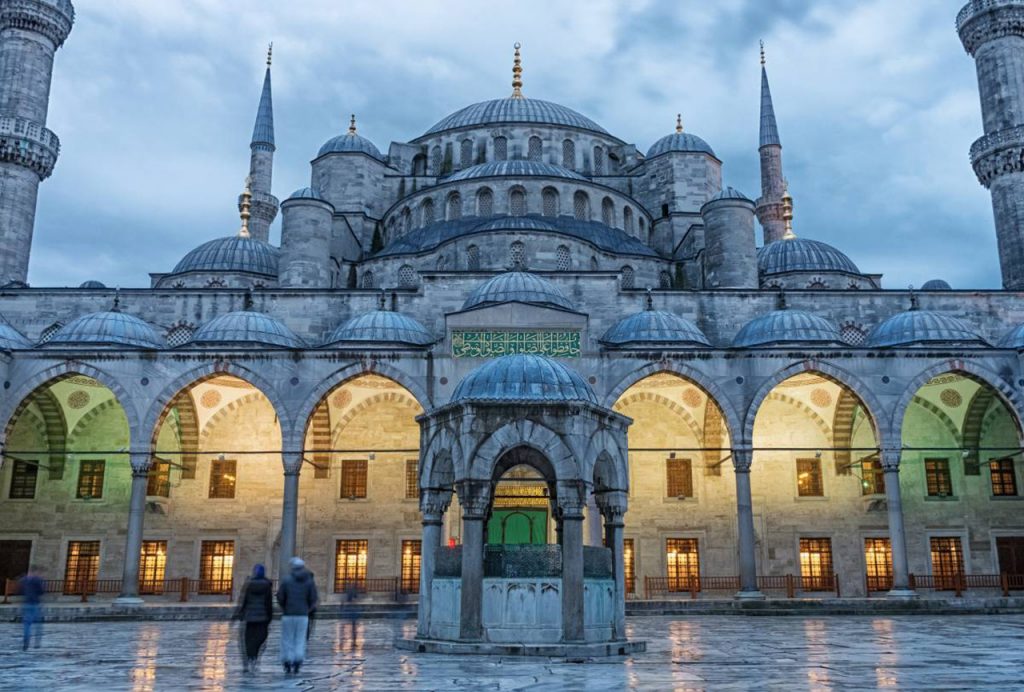
Another interesting feature of the Blue Mosque is its courtyard, which is surrounded by a colonnade of domed arches. The courtyard is paved with marble and features a central fountain, which was traditionally used for ablutions before prayer. The colonnade provides shade and shelter for worshippers, and the sound of the water from the fountain creates a calming atmosphere.
Overall, the architecture of the Blue Mosque is a testament to the skill and creativity of Ottoman architects. Its combination of impressive domes, intricate tilework, and harmonious design elements make it a true masterpiece of Islamic architecture.
Significance of Blue Mosque
The Blue Mosque, or Sultan Ahmed Mosque, is not only a significant religious site for Muslims but also an important cultural landmark in Istanbul. Here are some of the key aspects of its significance:
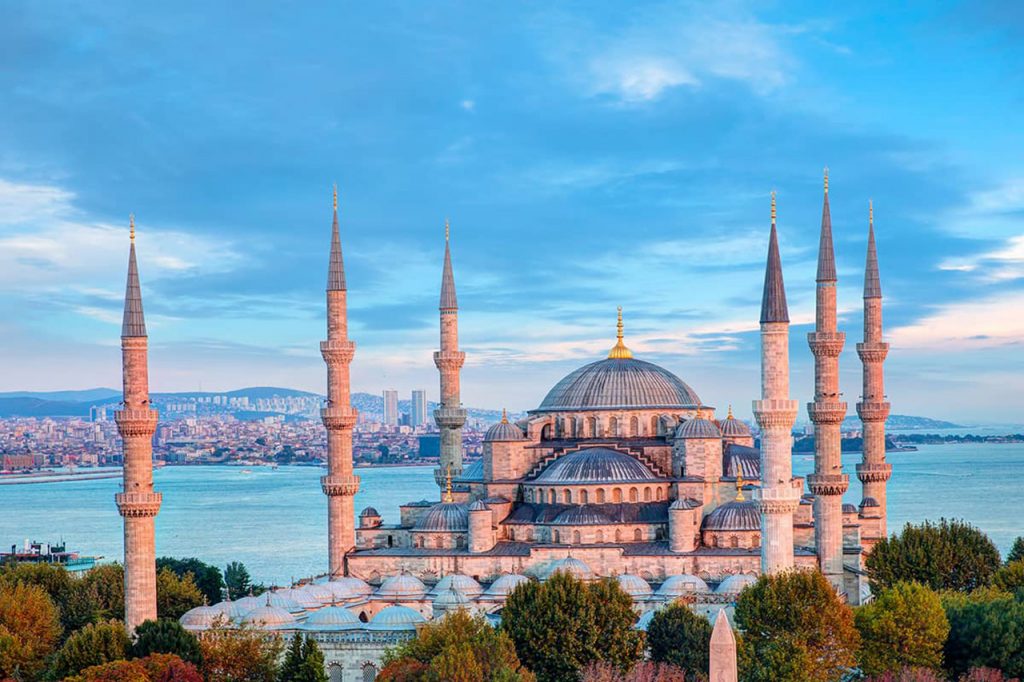
- Religious Importance: The Blue Mosque was built as a response to the Hagia Sophia, which was converted from a mosque into a church during the Byzantine period. Sultan Ahmed, I wanted to create a grand mosque that would rival the Hagia Sophia in size and splendor, as well as demonstrate the strength and prosperity of the Ottoman Empire. Today, the Blue Mosque is still an active mosque and is used for daily prayers and Friday congregational prayers.
- Architectural Beauty: The Blue Mosque is renowned for its stunning architecture and intricate details. It features a large central dome, six minarets, and eight secondary domes, as well as intricate tilework and calligraphy. The interior is decorated with blue Iznik tiles, which give the mosque its nickname, and the mihrab and mimbar are made of finely carved marble.
- Cultural Heritage: The Blue Mosque is a testament to the Ottoman Empire’s architectural and cultural legacy. Its grandeur and beauty have attracted visitors from around the world, and it has become a symbol of Istanbul’s rich history and cultural heritage.
- Tourist Attraction: The Blue Mosque is one of Istanbul’s top tourist attractions, attracting millions of visitors each year. Visitors are welcome to enter the mosque outside of prayer times and can take in the stunning architecture and artwork while learning about its history and significance.
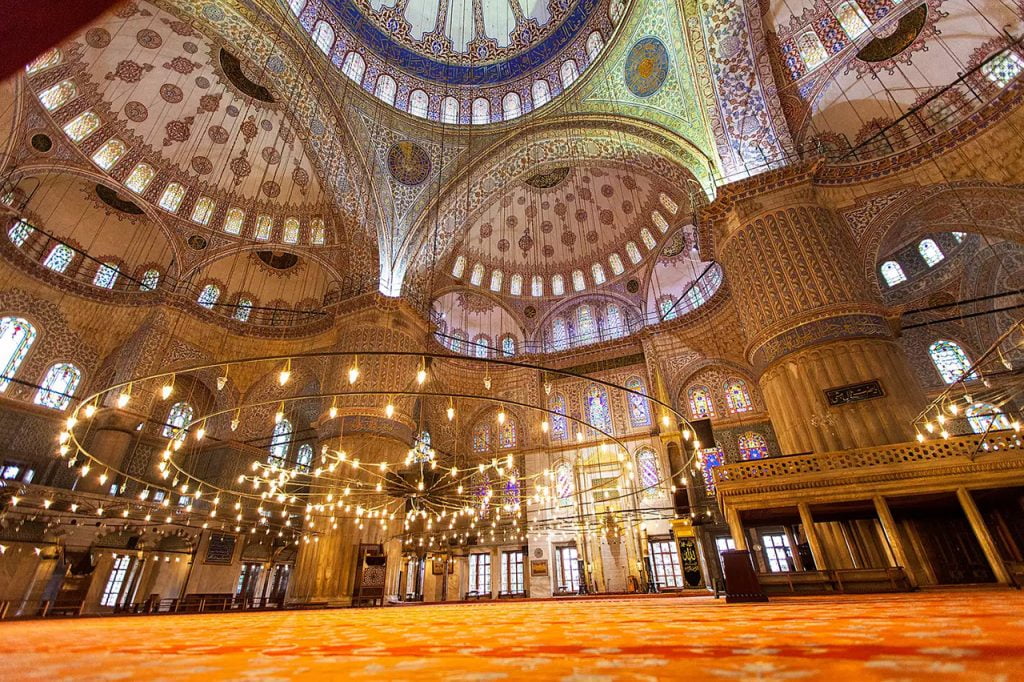
In summary, the Blue Mosque is significant for its religious importance, architectural beauty, and cultural heritage, and as a popular tourist attraction. Its grandeur and beauty have stood the test of time and continue to inspire visitors from around the world.
History of Istanbul
Istanbul, the largest city in Turkey, is known for its rich history and diverse culture. The city’s strategic location, at the crossroads of Europe and Asia, has made it a cultural and commercial hub for centuries.
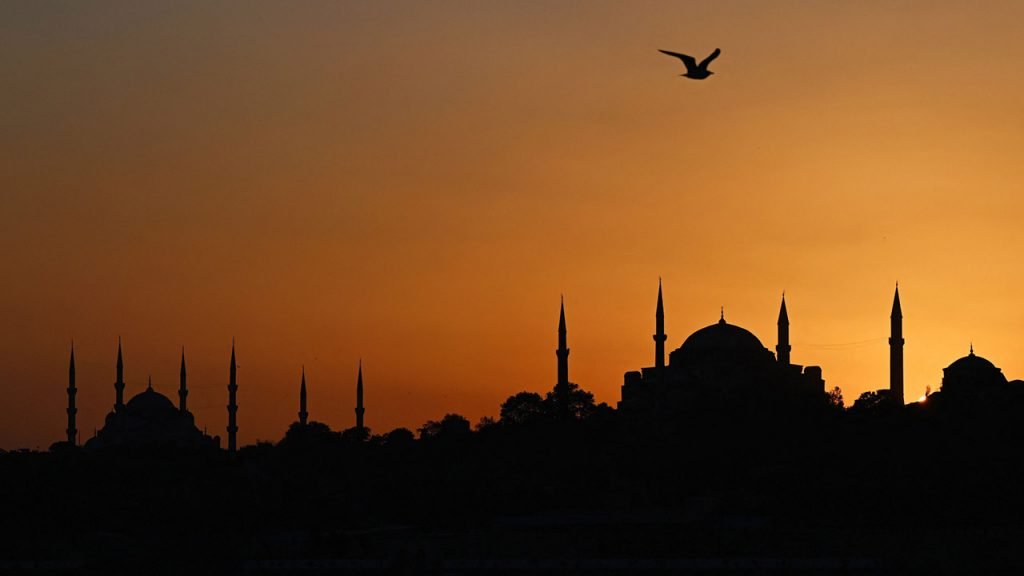
The history of Istanbul dates back to the 7th century BC when it was founded as Byzantium by the Greeks. It was later renamed Constantinople, after the Roman Emperor Constantine, who made it the capital of the Eastern Roman Empire in the 4th century AD. Under Byzantine rule, the city became a center of art, literature, and Christianity, with numerous churches, monasteries, and palaces being built.
In the 15th century, Constantinople was conquered by the Ottoman Turks and became the capital of the Ottoman Empire. The Ottomans continued to expand the city, building mosques, bazaars, and palaces, and making it a center of Islamic culture and learning.
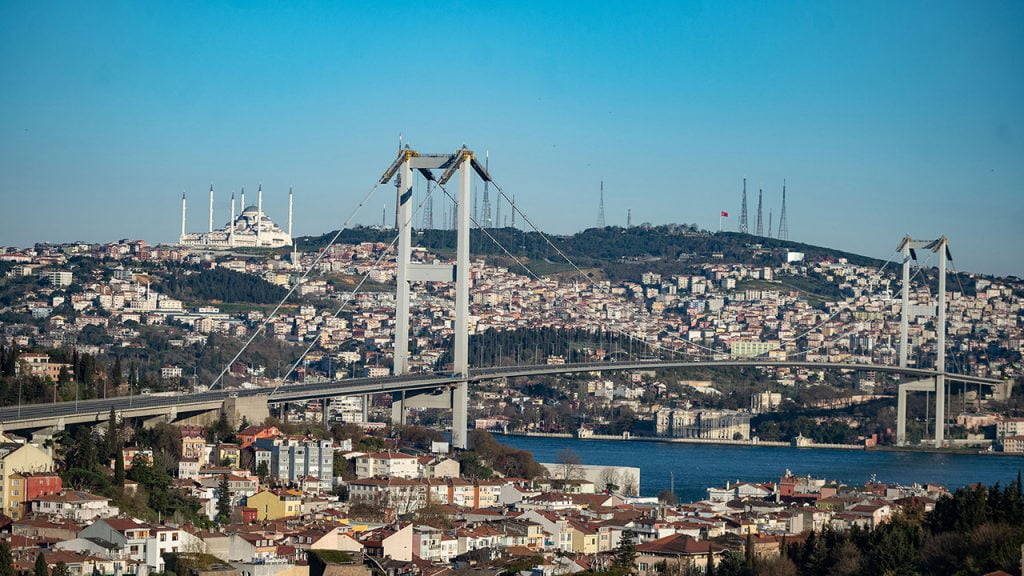
During the 19th and early 20th centuries, Istanbul underwent significant modernization and westernization efforts under the rule of the Ottoman sultans. However, following World War I, the Ottoman Empire was dissolved, and Istanbul became the capital of the new Republic of Turkey.
In the years following its independence, Istanbul continued to develop and modernize, with the construction of new buildings and infrastructure, as well as the preservation of its historical landmarks. Today, the city is a vibrant metropolis, with a rich cultural heritage and a thriving economy.
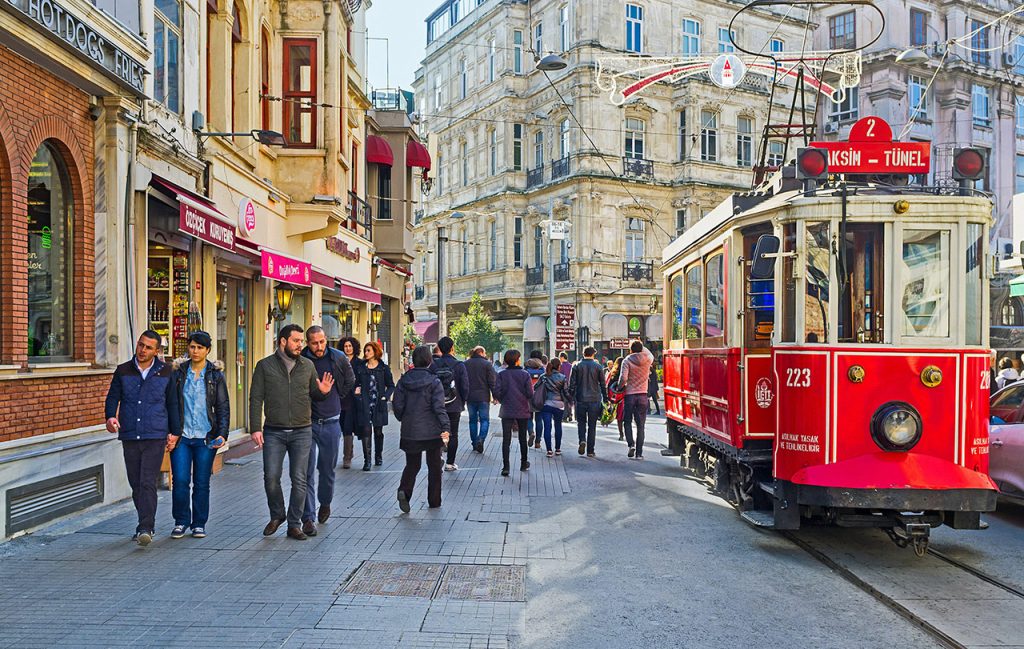
Visitors to Istanbul can explore the city’s many historical landmarks, including the Hagia Sophia, Topkapi Palace, and the Blue Mosque, as well as its numerous museums, art galleries, and cultural institutions. The city is also known for its bustling markets, delicious cuisine, and lively nightlife, making it a popular destination for travelers from around the world.
Pink Mosque (Shiraz, Iran) vs Blue Mosque (Istanbul, Turkey)
Blue Mosque in Istanbul and Pink Mosque in Shiraz are two beautiful and iconic mosques that hold great historical and cultural significance in their respective regions. While both mosques are known for their stunning architecture and intricate tile work, they have their own unique features and characteristics.
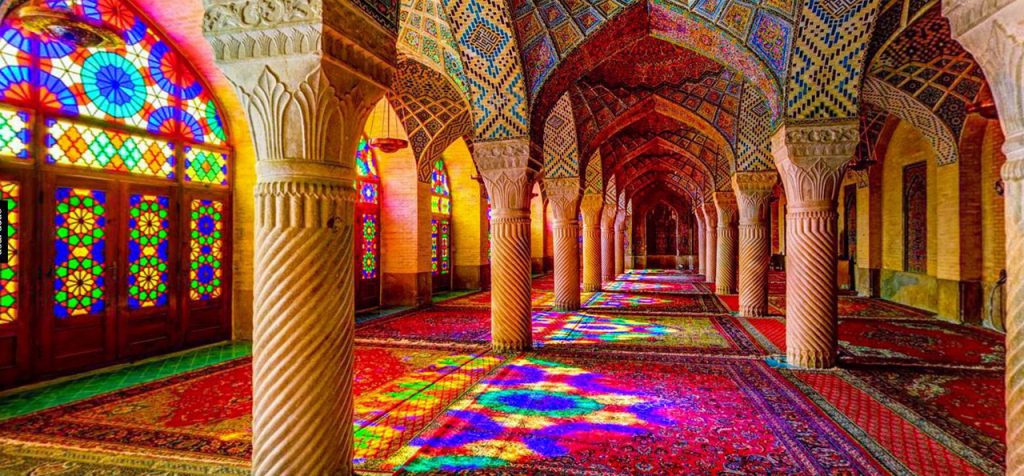
Architecture: Blue Mosque, also known as Sultan Ahmed Mosque, is a prime example of Ottoman architecture. It was built in the 17th century during the reign of Sultan Ahmed I, and its design is a fusion of traditional Islamic architecture and Byzantine elements. The mosque is famous for its six minarets, central dome, and cascading domes that provide natural light to the interior. The exterior is decorated with blue tiles, which gives the mosque its popular name.
Pink Mosque, also known as Nasir al-Mulk Mosque, is a masterpiece of Persian architecture. It was built in the late 19th century during the Qajar era and is known for its colorful stained-glass windows and intricate tile work. The mosque features five concave design arches that provide a unique play of light and shadow throughout the day. The interior is adorned with pink tiles, which gives the mosque its popular name.
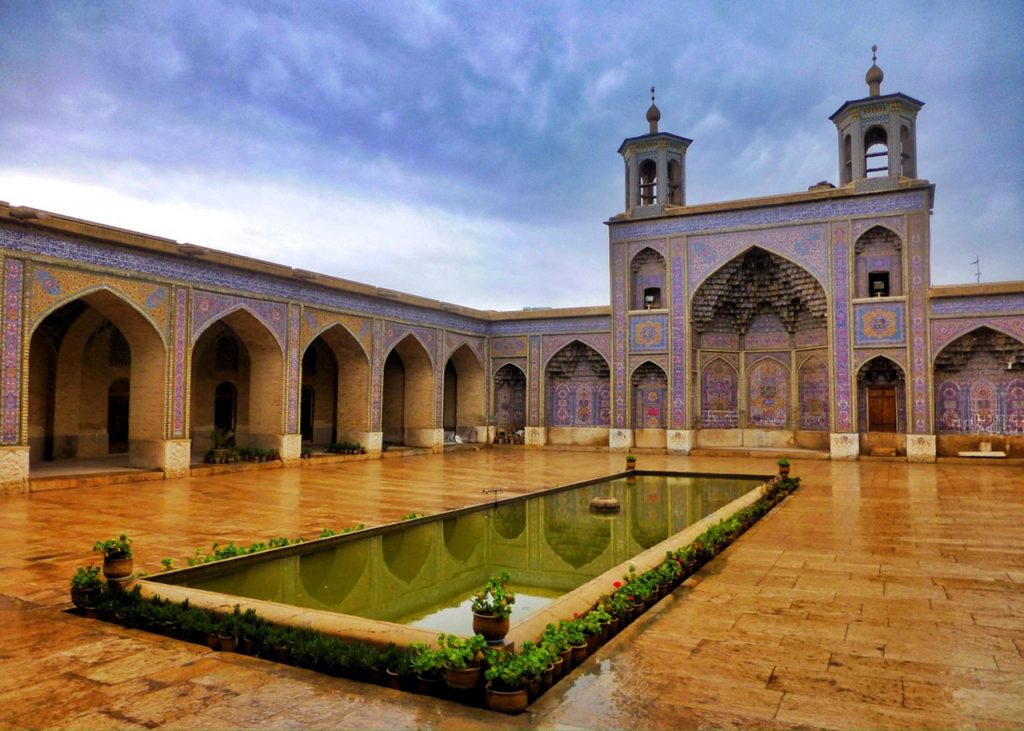
Location: Blue Mosque is located in Istanbul, Turkey, on the historical peninsula known as Sultanahmet. It is located close to other iconic landmarks like Hagia Sophia and Topkapi Palace, making it a popular tourist destination.
Pink Mosque is located in Shiraz, Iran, which is known as the cultural capital of Iran. The mosque is situated near other popular tourist destinations like the Vakil Bazaar and Karim Khan Citadel.
Significance: Blue Mosque is one of the most significant and iconic landmarks in Istanbul. It is a functioning mosque and a popular tourist attraction, attracting millions of visitors every year. It is also a symbol of the power and grandeur of the Ottoman Empire and its architecture and design continue to inspire artists and architects around the world.
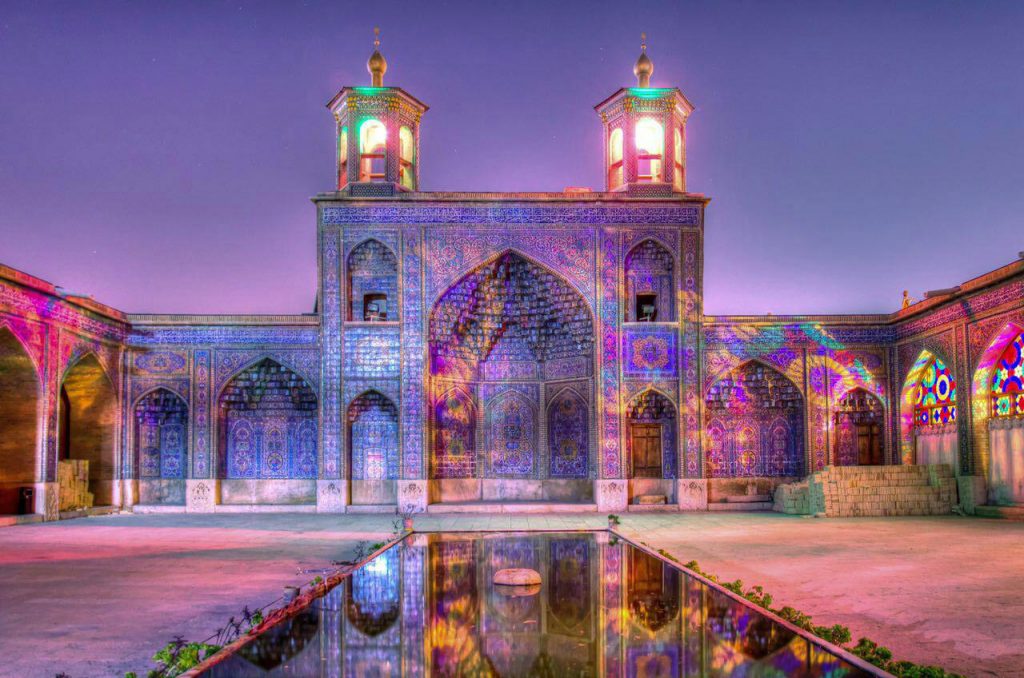
Pink Mosque is also a functioning mosque and a popular tourist destination. Its unique design and architecture have made it one of the most photographed mosques in the world. It is also a symbol of the cultural richness and diversity of Iran, showcasing the intricate tile work and colorful stained-glass windows that are hallmarks of Persian architecture.
In conclusion, while Blue Mosque and Pink Mosque share similarities in their architecture and cultural significance, they are unique in their own ways. Blue Mosque is an example of Ottoman architecture and a symbol of the grandeur of the Ottoman Empire, while Pink Mosque is a masterpiece of Persian architecture and a symbol of the cultural richness and diversity of Iran.
Our Latest Video on Youtube
Conclusion
The Sultan Ahmed Mosque, or the Blue Mosque, is a true marvel of Ottoman architecture and an important symbol of Istanbul’s rich cultural heritage. Its towering minarets, vast domes, and intricate tilework have inspired awe and admiration for centuries, and it continues to be a center of religious and cultural life in the city. If you ever have the opportunity to visit Istanbul, make sure to add the Blue Mosque to your list of must-see attractions.
